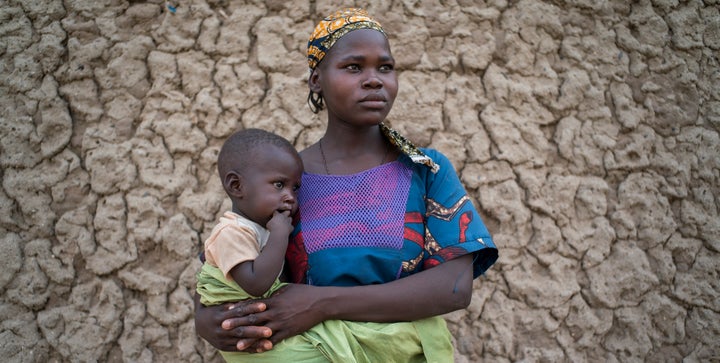
As a father of girls, I often pause to reflect on how my daughters’ opportunities contrast with those of earlier generations. The contrast isn’t only personal but reflects a global shift: girls today are on average healthier and better educated than at any point in history. In many spheres, the gap between boys and girls is closing and laying the foundation for a fairer, more prosperous future world. The International Day of the Girl is as good a moment as any for us to celebrate these gains.
But if we stop there, we risk complacency. Life is not lived in averages, and millions of girls continue to grind out a daily existence blighted by poverty, violence, a lack of education and ill-health, simply because they are girls. This is a gross injustice. It’s also a terrible waste of human potential. As a study last year by the World Economic Forum showed, the costs are borne by entire societies and are counted in the trillions of dollars. Where girls thrive, the payoff lasts decades: a better life for a girl ensures a better life for her future children, breaking the passage of poverty from one generation to the next.
Ending child marriage is the single most powerful catalyst of this better future for girls. Girls who marry early see their education cut short, at precisely the point in adolescence where the return from education is greatest. Closing the education gap between girls and boys at secondary level, where it persists in many parts of Africa and Asia, cannot happen without an end to child marriage.
Child brides also become child mothers, with marriage triggering pregnancy more often than the other way around. Ninety percent of teenage pregnancies around the world are to married girls who give birth before their bodies are ready, endangering them and their children: the World Bank estimates that 75 percent of teenage pregnancies could be prevented by an end to child marriage. And girls who marry, whether or not that marriage is forced, face an increased risk of violence. Half of all child brides have husbands at least 10 years older than them, making it twice as difficult to have an equal voice.
At the moment, progress in tackling child marriage is painfully slow. Each year, 15 million girls marry before their 18th birthday, and at just 1 percent a year, the rate of reduction is one-eighth of what’s needed to reach the UN target by 2030. In many countries in West Africa, the region that’s most affected, over one-third of marriages still involve girls.
Slow progress begs the question as to what needs to be done. Recent controversy in Bangladesh over lowering the legal age for girls to marry where there’s parental consent has put a spotlight on the role of the law in ending child marriage. In the past few years, many African countries especially, including The Gambia, Malawi and Tanzania, have raised the minimum age in response to vibrant national campaigns. But changing laws has proven easier than changing practice. New research by Save the Children and the World Bank shows that half of all child marriages – involving 20,000 girls a day – are below the minimum age allowed by law.
This doesn’t mean that minimum age laws don’t matter. They send a powerful signal about how girls should be treated. The fact that close to 100 million girls are not protected against child marriage under the laws of their countries should be a compelling campaign call-to-arms.
But this is not a problem that can be legislated out of existence. Often, girls are becoming brides because of family poverty and insecurity. Giving the poorest families cash transfers so that they can afford to keep their daughters in school, and delay marriage, shows promising results in many countries. Making schools safe for girls and sensitive to their needs, especially once they reach puberty, can often be the difference between attendance and dropping out. And ensuring that girls have the knowledge and health care they need to delay and plan pregnancy is crucial not only to their health, but also to their lifelong economic opportunities.
We have to recognize too that child marriage is often a deep-seated social convention, and organisations like mine must get better at supporting the growing movement of people, from religious leaders to women’s organisations, who recognize that child marriage is a threat to girls’ futures, and are working to challenge and change attitudes and practices. We are doing a growing amount of work in this area, from Somalia to Mali, and Bangladesh to Bolivia, to help tackle the underlying causes of child marriage.
Later this month, Save the Children will be part of a unique partnership, bringing together West African governments, the UN and NGOs, that is meeting in Dakar to take stock of progress towards the 2030 target, and to identify practical ways of having an impact in the region with the highest incidence of child marriage. Last month, at the UN General Assembly in New York, I was struck by the personal commitment of a growing number of African heads of state and government to working in partnership to confront the challenge of child marriage, and the groundswell of energy from civil society. It’s through new, broad-based coalitions like this that child marriage will be reduced and – ultimately – consigned to history. The Day of the Girl is a reminder of how far we’ve come but also the urgency and scale of the unfinished agenda.
